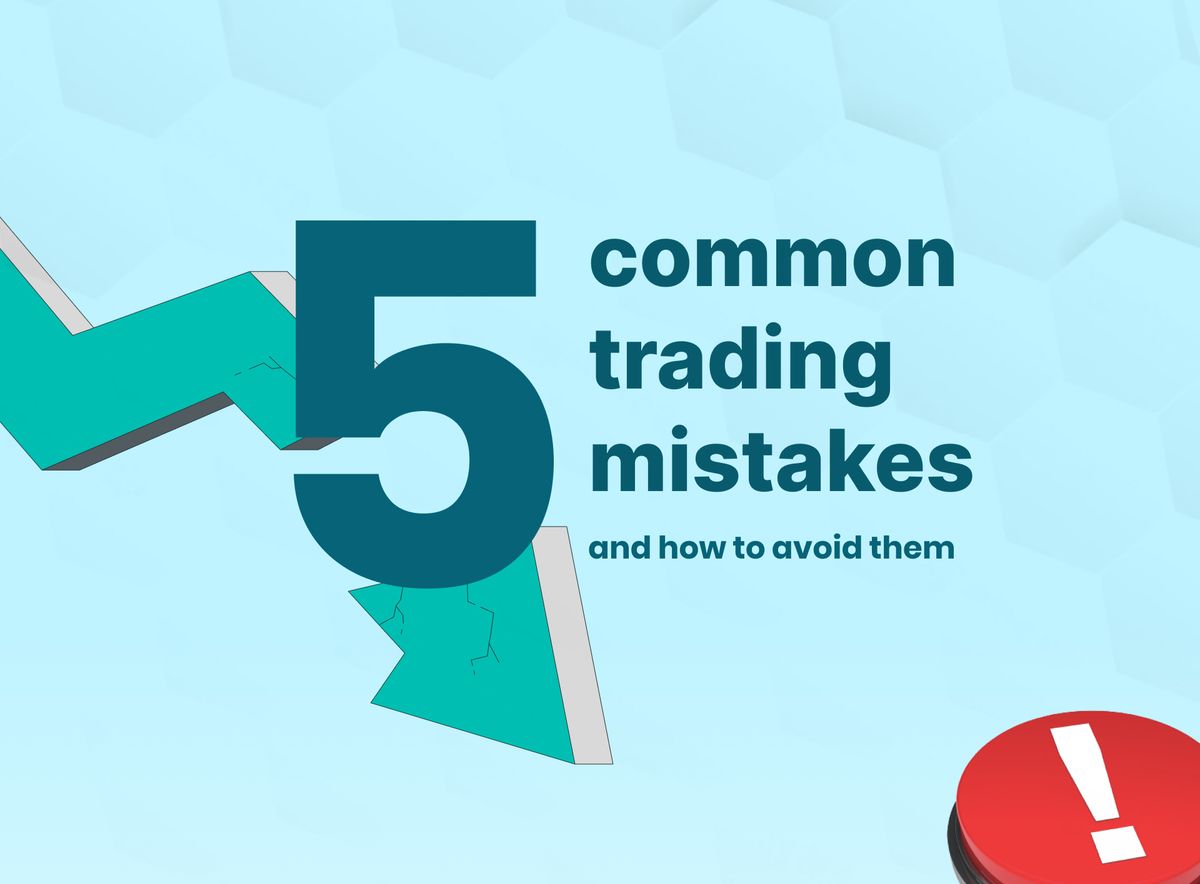5 Common Crypto Trading Mistakes and How to Avoid Them
Learn the top 5 trading mistakes like panic selling and revenge trading and how to avoid them for more profitable trades.

Cryptocurrency trading tends to involve a lot of trial and error, particularly for beginners.
The volatility of the crypto space, coupled with the fact that Cryptocurrency and Blockchain are still relatively infant industries, makes it a fertile ground for mistakes.
Many investors and traders have shared stories of losing money due to mistakes like revenge trading, panic buying/selling, and so on.
This article explores five common crypto trading mistakes and how to recognize and avoid them.
Five Common Crypto Trading Mistakes
Here are 5 common mistakes traders often make while trading crypto:
1. Trading Based only on Pump/Dump Calls
If you're active in Crypto social media spaces, you may have encountered one.
Pump/Dump scams are illegal acts that occur when investors in a particular cryptocurrency go online to promote the token and sell immediately after the value of the stock has risen.
Pump/Dump schemes happen when there's a new cryptocurrency token, and the people involved with this token go on social media to talk the token up before listing it on a lesser-known exchange platform.
Due to the discussion around the token, the value increases, and then it's listed on a bigger trading platform. Pump/Dump calls rely on FOMO and people's frenzy around new tokens and crypto projects.
2. Having no trading strategy or goal
'Failing to plan is planning to fail.'
Like anything in life, going into cryptocurrency trading without a specific goal or strategy is a recipe for disaster.
Your trading strategy should include your goals for crypto, how much you're willing to invest, and how much time you're ready to spend studying the markets.
On days when there's been a bad day on the market, some traders scrap their plans and start devising new ones. That's a bad idea.
A bad day on the market doesn't necessarily mean the trading plan is flawed; it just means that the market moved in a different direction than initially anticipated.
Trading strategies direct you on what you want from the market; having a strategy means knowing your actions and how they will lead to your goal.
Your trading strategy is the vehicle that would take you to the destination - your trading goal. Trading diaries, which are also part of having a strategy, are an effective way to track your trading moves.
Trading diaries show you why your successful trades were successful and why your unsuccessful trades were unsuccessful.
3. Panic Selling and Buying
In Bear and Bull markets, this is very common.
Some traders panic when the value of their coin starts to dip a bit and then sell everything they own, losing out on profits they would have otherwise gained when the value rose again. In the words of experienced crypto investors, "This is not the maximum; hold and do not sell,".
When the opposite happens, in a Bull market, some aspiring traders start to buy every token they can get their hands on for fear of missing out on a coin.
Panic buying cheaper coins in hopes that their value would rise during a bull market is also a common mistake.
Some coins may rise, but more often than not, they often turn out to be duds, leading to a huge loss for traders.
Panic buying and selling is often the result of FOMO - the Fear of Missing Out on profits. The fear of losing profits causes crypto traders to act in a way that they often lose profits.
If you're inclined to panic buy or sell, you should take a step back, analyse the market, and make logical decisions based on predicted patterns. When markets fall, it's natural to feel panic and want to reclaim all your capital, but it isn't worth it to panic and sell everything you own at once.
4. Going into Margin Trading without Experience
Margin trading is a trading system involving taking a loan from the exchange you're using to trade. The collateral required for this type of loan is called a margin.
Now, margin trading is not all bad; if you're successful, it is very profitable.
But that requires a lot of experience that beginners don't have. Even specific experienced traders still accrue losses when doing margin trading.
Unless you have perfected your skills with paper trading and you feel very confident in your experience as a trader, do not get into margin trading.
5. Revenge Trading
When trading on the cryptocurrency market, losses are inevitable. Nobody is 100% successful in trades.
However, not a lot of cryptocurrency traders have built up the thick skin to shrug off losses and fall into revenge trading.
Revenge trading is an emotional situation where a crypto trader starts making even riskier trades in an attempt to even out the losses after a loss.
These trades are born out of fear of losing capital and frustration at the losses. Revenge trading is usually carried out by traders who have been having a previously good run before a loss set them back; this leads to anger that they have experienced a loss and a yearning to get it all back.
Going into revenge trading exposes you to even more loss and exposes your crypto portfolio to even more loss.
To Sum Up
When it comes to cryptocurrency trading, it is essential to remember that every trader makes mistakes.
Even if you make or have made one of the mistakes in this article, it is not the end of the world, nor is it the end of your trading journey.
Making mistakes in your trading journey should be treated as lesson plans to know what works for you and what doesn't.
Disclaimer: This article was written to provide guidance and understanding. It is not an exhaustive article and should not be taken as financial advice. Obiex will not be held liable for your investment decisions.




